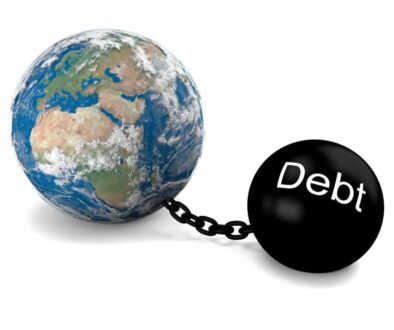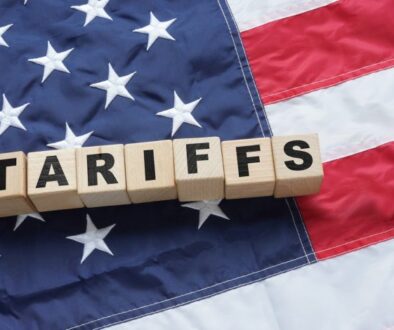BY DR SOHA MAAD
Introduction
The rise of cryptocurrencies and United States US-backed stablecoins, has potential impact on the European Union EU’s monetary sovereignty. The United States dollar-denominated stablecoins could challenge the euro’s dominance and financial stability.
In response, the European Central Bank (ECB) is accelerating efforts to develop the digital euro to safeguard Europe’s monetary autonomy by providing a secure, central bank-backed alternative to private and foreign digital payment solutions. The digital euro is envisioned to complement physical cash, enhance financial inclusion, and reduce transaction costs across the eurozone. There is a strategic need for the EU to maintain control over its monetary policy and reduce dependence on external digital payment systems.
This article sheds light on United States US president Trump crypto policy and its wider impact on EU, Arab countries and worldwide. The article also overviews EU crypto regulations and traces a roadmap for the EU and Arab countries to navigate the evolving global crypto landscape.
Trump Crypto Policies
Donald Trump’s administration has introduced several crypto-related policies that reflect a pro-crypto stance. Key policies include:
- Strategic Bitcoin Reserve: Trump signed an executive order to establish a reserve of Bitcoin seized through law enforcement proceedings. This reserve is intended to position the US as a leader in digital asset strategy.
- US Digital Asset Stockpile: Alongside the Bitcoin reserve, a stockpile of other cryptocurrencies was formed, consisting of assets obtained through forfeiture proceedings.
- Ban on US CBDC: The US administration has explicitly prohibited the development of a US central bank digital currency (CBDC), diverging from global trends.
- Pro-Crypto Appointments: High-profile appointments signal a commitment to integrating digital assets into the US economy.
- Regulatory Reforms: The US administration has repealed restrictive regulations, such as the Staff Accounting Bulletin No. 121 (SAB121), to foster a more crypto-friendly environment.
These policies aim to solidify the US position as a global leader in the crypto space.
EU Crypto currencies Regulations
The European Union is implementing the Markets in Crypto-Assets (MiCA) regulation, which establishes a unified framework for cryptocurrency activities across its member states. MiCA addresses several key areas:
- Transparency and Disclosure: Issuers of crypto-assets must provide detailed information through a “crypto-asset White Paper” to ensure clarity for investors.
- Authorization and Supervision: Crypto service providers, including exchanges and wallet providers, must obtain licenses and adhere to strict operational standards.
- Stablecoin Regulation: Issuers of stablecoins are required to maintain sufficient reserves and provide clear disclosures about their backing.
- Consumer Protection: Robust anti-money laundering (AML) and know-your-customer (KYC) protocols are mandatory to safeguard users.
- Market Integrity: Measures to prevent insider trading and market manipulation.
MiCA aims to form a secure and transparent ecosystem while promoting innovation in the crypto space.
Impact of Trump Crypto Policy on EU Sovereignty And Economy
US president Donald Trump’s administration crypto-friendly stance, favouring the United States US dollar-backed stablecoins, underscores the geopolitical implications of digital assets in shaping global financial landscapes.
French Central Bank Governor warned that Trump’s pro-crypto stance could lead to financial instability and even a global economic crisis. It will raise geopolitical and economic tensions surrounding cryptocurrency adoption.
EU Strategy In Face of the Challenges
The EU is responding to the challenges posed by Trump’s crypto policies, particularly his endorsement of US dollar-backed stablecoins, by taking the following measures:
- Accelerating the Digital Euro: The European Central Bank (ECB) is fast-tracking the development of a digital euro to provide a secure, central bank-backed alternative to private or foreign digital currencies.
- Enforcing the Regulatory Frameworks: The EU has implemented the Markets in Crypto-Assets (MiCA) regulation to ensure transparency, consumer protection, and market integrity in the crypto space.
- Adopting Strategic Autonomy: The European Stability Mechanism (ESM) emphasizes the importance of maintaining monetary sovereignty and reducing dependence on dollar-denominated stablecoins.
These measures reflect the EU’s commitment to safeguarding its economic and financial stability in the face of evolving global digital asset landscapes.
Latest Developments of Digital Euro
The European Central Bank (ECB) is making significant progress on the digital euro project, aiming to strengthen Europe’s monetary sovereignty and reducing reliance on foreign payment systems. The ECB is currently in a two-year preparation phase, which includes finalizing the digital euro’s rulebook, selecting infrastructure providers, and conducting technical testing. This phase is expected to conclude by October 2025. The digital euro is designed to complement cash, offering a secure and accessible payment solution. It aims to provide the most private digital payment option available, operated through a public-private partnership. The European Commission has proposed draft legislation to grant the digital euro legal tender status, ensuring its widespread acceptance across the euro area.
Trump Crypto Policy Impact on Arab Countries
Many Arab nations rely on the US dollar for trade and financial transactions. Trump’s policies could further entrench dollar dominance through stablecoins, potentially limiting the adoption of local or regional currencies. However, some Gulf countries, like the United Arab Emirates UAE, are exploring their own central bank digital currencies (CBDCs) to maintain financial autonomy and adapt to the evolving digital landscape.
This geopolitical shift highlights the growing influence of digital assets on global financial systems.
Global Impact of Trump Crypto Policy Beyond eu
Trump’s crypto policies had ripple effects globally, beyond the EU. The broader impact involves:
- Dollar Dominance: Stablecoins pegged to the US dollar reinforce US Dollar global dominance, affecting countries that rely on alternative currencies or are exploring their own digital currencies.
- Market Volatility: Trump’s policies have contributed to fluctuations in the cryptocurrency market, with significant losses observed during tariff announcements.
- Trade Relations: Reciprocal tariffs introduced by Trump have indirectly influenced crypto markets, as global trade tensions heighten economic uncertainty.
- Innovation Push: Some nations, like China and the UAE, are accelerating their digital currency initiatives to counterbalance the influence of US-backed stablecoins.
These developments highlight the interconnectedness of global financial systems and the strategic importance of digital assets in shaping economic landscapes.
Road Ahead For Arab Countries
The Union of Arab Banks suggests the following roadmap for Arab countries to navigate the challenges posed by the evolving global crypto landscape:
- Regional Collaboration: Gulf Cooperation Council (GCC) countries, including Saudi Arabia, the UAE, and Qatar, should align their policies on cryptocurrencies to form a unified regulatory framework. This would prevent regulatory arbitrage and strengthen their collective financial stability.
- Central Bank Digital Currencies (CBDCs): Some Arab nations, like the UAE, are exploring their own CBDCs to maintain monetary sovereignty and reduce reliance on foreign digital currencies.
- Diversification Strategies: Arab countries should develop proactive crypto regulations to attract investments and diversify its economy away from oil dependence.
- Balancing Risks and Opportunities: Arab countries should remain cautious due to concerns about financial security and compliance with Islamic finance principles.
These steps reflect a mix of caution and innovation as Arab countries adapt to the evolving global crypto landscape.
To address the challenges posed by the evolving global crypto landscape, both the EU and Arab countries should also consider implementing additional regulations tailored to their unique financial landscapes:
The EU should strengthen partnerships with non-EU countries to regulate the global impact of US dollar-backed stablecoins. It should also further accelerate the adoption of the digital euro by incentivizing businesses and consumers to use it over foreign stablecoins. Introducing stricter rules for foreign stablecoins operating within the EU is also needed to ensure euro sovereignity.
Arab Countries should establish a Gulf-wide regulatory framework to prevent regulatory arbitrage and promote financial stability and develop and promote central bank digital currencies (CBDCs) to reduce reliance on the US dollar and foreign stablecoins. Arab countries should also educate citizens and businesses about the benefits of local digital currencies and the risks of foreign dominance.
These measures could help both regions maintain monetary sovereignty and adapt to the evolving global crypto landscape.



